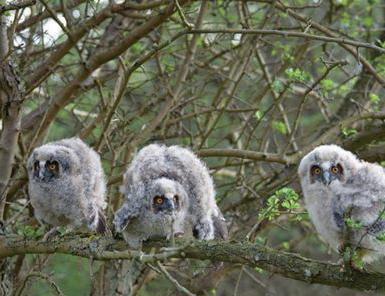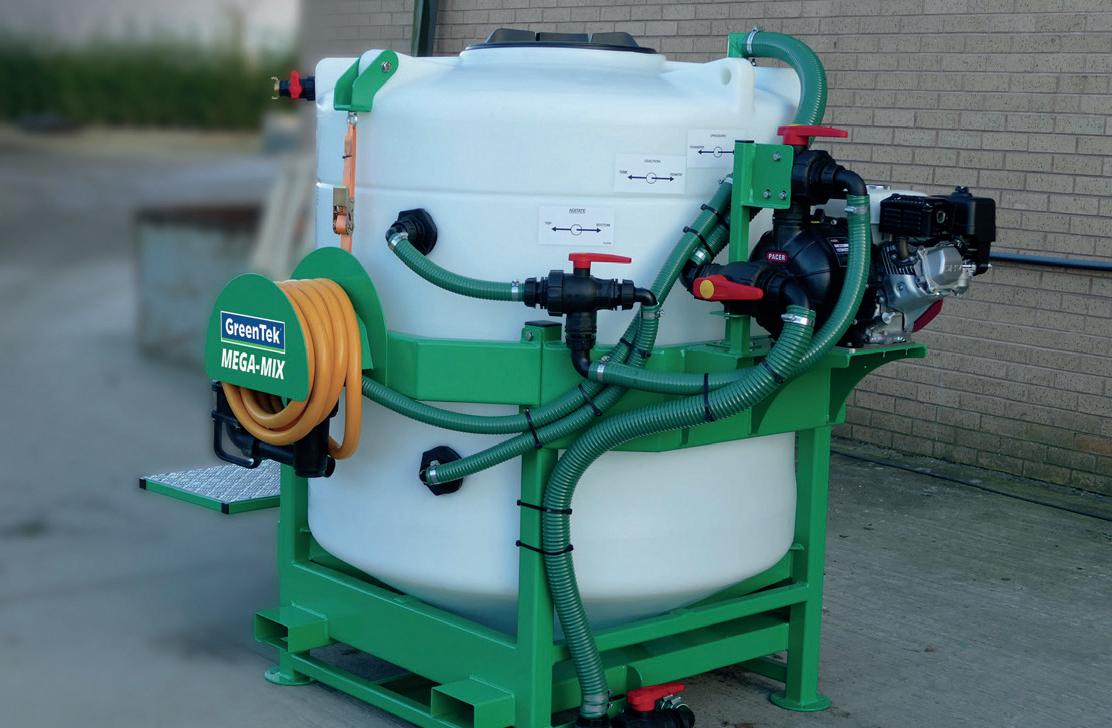
3 minute read
GEA AWARDS
Applicants to the Golf Environment Awards can choose from six categories to enter:
Award
Award
6. Environmental Golf Course of the Year (International) pathways on the course.”
Due to the course being largely based on an SSSI area, working with Natural England came as a challenge at times. Nigel expands: “Natural England does restrict us. We can’t just go out and plant a tree or cut one down, we need to gain permission from them, however they have always been sympathetic to projects and our requirements.”
What do the members think?
Nick indicates that there has been a mixed viewpoint from members: “The majority of members love what we are doing, but there have been others concerned about what expense it has come at. This is where education comes in with members and we have communicated that the conservation work has cost very little.”
He draws on an example as he expresses the need to educate members on wildlife: “We built an owl tower and I’ve had loads of comments about the look of it and how it’s an eyesore. Within three to four months a barn owl had moved in and I can showcase the image to members and online.”
What’s next for Sleaford conservation plans?

Nick suggested further work towards sustainability: “We’ve installed a rainwater collection harvester which holds 70,000 litres. We have put solar panels on the roof and installed air conditioning around the clubhouse to try and save energy.”
Nigel highlighted how much these changes have saved the club: “It has saved us around £6000 per year in energy. We have also installed LEDs in all rooms around the clubhouse. We are trying to do everything we can to reduce the use of fossil fuels.”









Can you tell us a little more about what have you done so far?
We’ve recently recycled approximately 250 tonnes of rootzone, old bunker sand, topsoil and leaf mulch; screening down to 10mm topsoil for landscaping works and fines that will be used to top up sunken drainage lines in fairways.
When did you first focus on recycling and sustainability?
Our first recycling efforts started in 2007, when we converted the used oil from the fryers in the clubhouse kitchen to biodiesel using our own ‘Fuel Pod 2’. We converted 2000L a year, which saved us a tank load a year and around £1200 at that time. With fuel prices varying so much, it’s difficult to calculate the exact savings over the last fifteen years, but it would be something in the region of £20,000!
How important is it to undertake sustainability projects, especially given budget and price points are under strain?
With global costs of materials increasing (seemingly monthly), we are always looking for ways to reduce the number of materials being imported into the golf course, and thus our impact on the environment. We try to reuse materials wherever possible.
What is planned for the future?
We’ve recently purchased a chipper, so all the brush and timber from our tree works can now be chipped down and used for mulching on flower beds and some paths that are through woodland, so they remain a little more natural and rustic.
We have a ‘rolling’ five-year course improvement programme which includes reconstructing the back nine bunkers - in line with our course appraisal carried out by architect Howard Swann. Levelling tees is a constant and ongoing process for us as we are on a hilly site consisting of London Clay, so movement is inevitable. Our biggest project on the horizon is to construct a reservoir to harvest rainwater from ditches that would flow into the proposed area. Once planning is approved, we are planning to use a reed bed system to filter out unwanted nasties.
Have you found the project rewarding?
Carrying out any improvement to the course is rewarding. It is great having such a capable and experienced team that can really get involved and take ownership of the projects we carry out. Every team member has input into the project and ideas are bounced around to get the best outcome. Making any teeing ground larger and flatter will benefit membership and provide better surfaces for more of the season.
Knowing that we saved thousands of pounds in topsoil being imported is also satisfying, and knowing that we have not had to have several artic lorries running into the course and the reduced impact that has had environmentally is also a huge positive.
How have the members reacted to the work that has been done?
Members enjoy new improvements and can now start to see the projects nearing completion. We will be undertaking course improvements every other year from now on, so the membership gets a rest from areas of the course looking like a building site over the winter months. This will mean that we can focus on our tree programme and ecology report that was produced by James Hutchinson from BIGGA last September - the focus of which is to remove the Leylandii and Poplar species from the course and plant deciduous native tree species.










